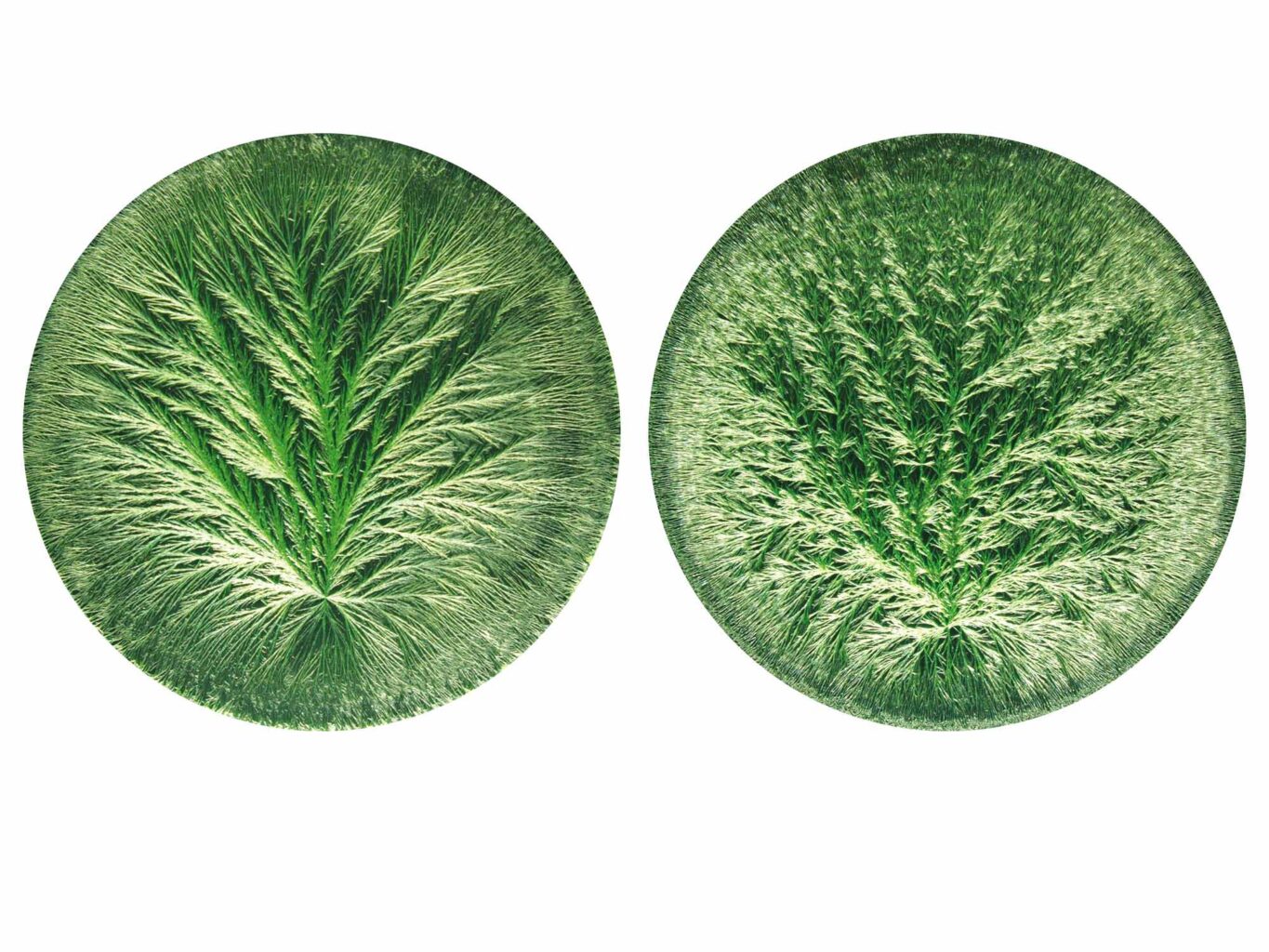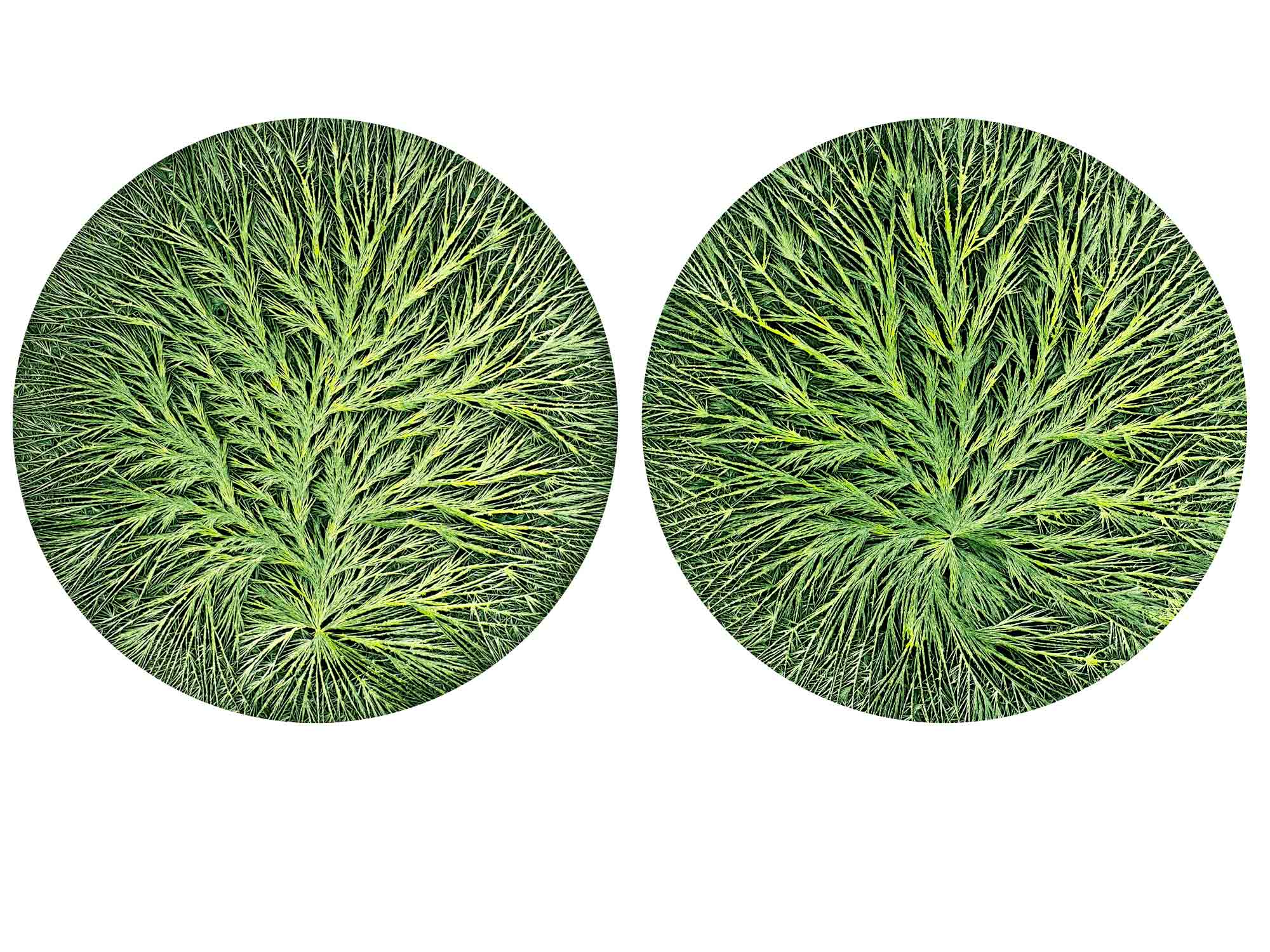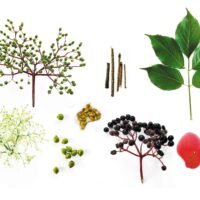The copper chloride crystallization method complements the existing quality research, from the plant quality evaluation to the clinical diagnosis. As a picture-forming method, it recognizes the quality of a substance on the basis of the context acting in it and not only on the basis of the evaluation of individual components. It closes a gap for research into the quality of biodynamic products and agriculture.
Biodynamic agriculture goes back to eight lectures given by Rudolf Steiner in June 1924 at Koberwitz Castle (now Kobierzyce, Poland). Later, these lectures were published in book form under the title ‹Geisteswissenschaftliche Grundlagen zum Gedeihen der Landwirtschaft› (Spiritual Foundations for the Renewal of Agriculture). This title makes it clear what Steiner was primarily concerned with: an expansion of the agricultural practical knowledge of his time with the help of anthroposophical spiritual science. He not only considered the interactions between soil, plants, and animals on the farm but also broader natural relationships, such as those between the Earth and the cosmos. These relationships are complex and controversial, as it is not easy to determine the extent of cosmic influences on plants and animals.
With the goal of making the internal quality of this form of agriculture scientifically communicable, biodynamic research has undertaken considerable efforts in recent decades. For example, the FIBL (Forschungsinstitut für biologischen Landbau / Research Institute of Organic Agriculture) compares the conventional (K), the bio-organic (O), and the biodynamic (D) farming methods in a field trial that has been running for over forty years. In this so-called DOK Experiment, it was scientifically proven that soil life and the biodiversity of the accompanying flora and fauna in biodynamic agriculture are 60 percent higher than in conventional agriculture. At the level of ingredients, biodynamic cultures tend to have more secondary plant substances, which usually result from an increased engagement of the plant with its environment.
As interesting as these findings are, they are unable to establish references to the original, spiritual principles of biodynamic agriculture, let alone to base the premise of cosmic influences on the plant world. For this reason, research methods are needed that provide insights into the organizing properties of living organisms. This is where the so-called picture-forming methods come into play.

Fingerprint of the Whole
In order to investigate the forming forces in nature, Ehrenfried Pfeiffer developed copper chloride crystallization and round filter chromatography in the 1920s, and Lily Kolisko developed capillary dynamolysis (the Steigbild method). Since then, these methods have been applied on a large scale to a large number of samples and research questions, such as the effect of biodynamic preparations, different cultivation methods, and different processing methods on food quality, but also the qualitative assessment of pharmaceutical processes and, last but not least, the diagnosis of clinical diseases in human blood.
As the name suggests, these methods do not primarily generate quantitative data, but images that are visually evaluated by trained scientists. Due to the limited knowledge of the processes underlying the formation of the image, as well as the necessary personal, empathetic relationship that the assessor must enter into with the image during the visual evaluation, these methods have been dismissed by contemporary science as subjective and unscientific.
In order to dispel these objections, a European consortium of anthroposophical-oriented researchers was formed a good 20 years ago with the goal of introducing copper chloride crystallization into science as a method for (food) quality analysis, which is integrated into a spiritual science context and yet is scientifically recognized. To this end, the consortium has not only worked on the standardization, validation, and practical application of copper chloride crystallization but has also considered the physical processes underlying the formation of the image.
The method is based on the phenomenon that tree-like crystallization images arise when a solution consisting of copper chloride and an extract (for example from a plant) or blood crystallizes in a Petri dish in a vibration-free evaporation chamber. The crystallization images are specific to the examined product, but differ considerably depending on the ‹state of health› of the organism – whether plant, animal, or human. In this way, qualitative differences can literally be made visible (see Fig. 1).
In comparison, the methods for determining food quality that are officially approved in Germany and laid down in the Food and Feed Code (LFGB, §64) only measure the content of individual components. The connecting element between these analytical measurement results of individual components, such as a carrot, and the carrot as a whole is missing. This missing element can best be described as the coordination or organization that disappears when the food is broken down into its individual compounds.
By means of copper chloride crystallization, which, in contrast to analytical methods, is based on an ordering principle, an image or a ‹fingerprint› of the ‹coherent whole› can be generated. As soon as the foundations have been laid for discussing food quality in scientific discourse on the basis of the images generated and the principle of order acting behind them, the prerequisites for the scientific recognition of the method are also met.
The generated images are evaluated in two different ways: on one hand visually by trained scientists and on the other hand with the help of computer-aided image analysis. Computer-aided analysis can be seen as more ‹objective›, which facilitates communication in the scientific environment. However, this approach loses the subtleties of the method that are captured in the visual evaluation.

More than Subjectivity
In order to refute the accusation of subjectivity, a multi-member evaluation panel has been formed, which is based on the international standard norms for sensory panels and has specialized in the visual evaluation of crystallization images through regular ‹training›. For this purpose, criteria were developed and defined with which the essential characteristics – the phenomena of a crystallization image – can be described. The application of these criteria to crystallization images requires a certain degree of ‹empathy›, empathetic discussion, and thus inner training.
This path of inner training is scientifically recognized and has been published in several scientific articles. In this way, the panel was able to develop a common language for the description of crystallization images, which builds a bridge between the personal and the common, the self and the others.
If you look at the two carrot images (see Fig. 1), you get an impression of how the evaluation works: From an analytical perspective, the crystallization image of the fresh carrot juice has clearer needle branches, regularly arranged side needles, and, especially in the middle area, shorter and more abundant side needles. With a sensitive view, one becomes aware of a feeling of tension in the needle branches of the fresh juice that goes out from the center to the periphery. The image appears to be spreading. In addition, the center seems to coordinate the image more strongly than with the aged juice. This can be observed by focusing one’s attention on the center and following the flow of branches with a peripheral gaze. Together, this creates a sense of organized tension that we usually find in fresh produce and that is lost as the sample ages or is being processed.
A more subtle example is the effect of the treatment of mistletoe trees (elms) with biodynamic preparations on the quality of the mistletoe preparation (see Fig. 2). If you compare the two crystallization patterns with a purely analytical perception, the long, somewhat coarse and irregularly arranged side needles of the variant treated only scarcely (only once with horn manure) are the most striking. In the branches of the picture for the variant treated often (several times with horn manure and horn silica), a more flowing, networked movement appears on sensitive observation. You become aware of a ‹presence› emanating from the crystallization center, which coordinates the pictorial elements and leads to a coherent wholeness.
It is obvious that these images have a completely different effect on oneself than the interpretation of so-called ‹hard data›. We experience that working with these images, which means looking at the effects of processing methods or cultivation systems, for example, appeals to our morality. The statement that ‹spirit is never without matter and matter is never without spirit› (R. Steiner) helps us to consider the copper chloride crystallization images as a ‹manifestation› of the spiritual dimension of the organism from which the images originate and to grasp the degree to which they can maintain their integrity.
Cultural Activities
The time has come to make more comprehensive use of sensitive research methods that can visualize and convey vitality aspects such as resilience and self-regulation of organisms on a scientifically sound basis. In this way, aspects of life and health that have not yet been sufficiently taken into account by science can be made aware of. Life is more than a collection of individual substances or is not merely a side effect of chemical and physical processes, but is expressed in them.
The Association for Cancer Research
Founded in 1935, the Association for Cancer Research focuses on the development of drugs for integrative cancer treatment based on mistletoe and other medicinal plants. In addition to analytical laboratory methods, picture-forming methods also have a high priority in the work of the Association for Cancer Research.
The research initiative of the Association for Cancer Research in this area has gained momentum with the recent construction of two identical, state-of-the-art chambers for copper chloride crystallization. A project on the quality of medicinal plants is currently being launched, which uses the Steigbild- and copper chloride crystallization methods to investigate whether the sowing of certain host trees for mistletoe and the administration of biodynamic preparations can have a cumulative effect in certain cosmic constellations. Based on promising evidence (see Fig. 2), the association tries to strengthen the connection between the original, spiritual principles of biodynamic agriculture and pharmaceutical processes.
Systemic Diagnostic Test
From mistletoe research, the link to clinical research, especially cancer research, is quickly established. Picture-forming methods can bring added value, especially in clinical diagnostics, because they show the systemic state of the patient and do not aim to detect local abnormalities. The goal of our research is to review and further develop picture-forming methods in such a way that they can be used to screen people for a predisposition to certain types of cancer and to continuously monitor the state of health during and after cancer. If a predisposition to cancer is detected at an early stage, targeted therapies and measures (such as mistletoe therapy or dietary change) can delay or perhaps even prevent the onset of the disease or mitigate the course of the disease as much as possible.













